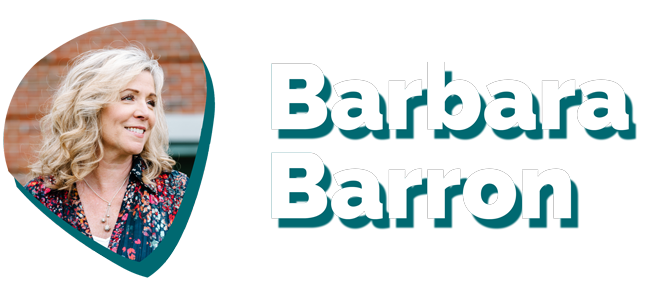by Barbara Barron | Posted June 14th, 2023 | Subscribe to this newsletter

Ah, June!
The students are gone. The faculty are mostly cleared out. Even if you’re pushing hard to June 30th to collect those outstanding pledges (never the most fun part but an important one), you can see a break ahead.
I love summer. But working in schools for so many years, I have found that after the initial relief that comes as the pressure lowers, and we have a sweet sense of freedom knowing the days ahead are going to be less packed — there is a weird stultifying effect that summer has.
Less pressure means no real urgency. Quiet offices tend to make it harder to find colleagues to collaborate with. Donors are away, so it’s tough to set up meetings.
And for me, every Head I ever worked for took off all of July, the very end of June, and some part of August as well. No judgment: they need it.
But taken together, the result is a definite lag in productivity. After all, if it doesn’t matter if we prepare that report or draft the fall appeal today or next Tuesday, there’s no urgency, and therefore, things tend to stall.
Now, anyone who has read my articles knows I am 100% in your corner. I respect and admire what you do. I know the realities of our work in advancement. And I hope that whatever else you glean from this piece, you take my earnest advice to get some time off to do things away from your office, your laptop, your phone. Rest, relax, restore. I’ve written on this before. You simply cannot be as good as you are unless you tend to your own heart and mind and body. Make some plans for you and stick with them.
But during the weeks of summer that you are working, why not make this a fruitful summer? Why not take on a few projects that will help you start the new school year with energy, focus, and some new ideas? Here are a few that I think are worthwhile.
Have you subscribed to this newsletter yet? It only takes a minute.
1. Get smarter about some important trends and techniques.
I’ve written about the great wealth transfer. This month I got myself a little more educated about the important role that DAFs (Donor Advised Funds) are playing for nonprofits. I have long known what they are, of course, and have urged donor families to make grant recommendations to my schools (or my client schools).
What was eye-popping was how big this has become. According to Inequality.org:
“There is now $234 billion sitting in the coffers of DAFs, up from $167 billion the previous year. And in 2021, for the first time, DAFs received more contributions than private foundations did. Donors gave $73 billion to DAFs versus $50 billion to private foundations.” Apr 13, 2023
No doubt you’ve also heard the negative press. That owners of donor advised funds are misusing them to stash money away, get their charitable tax credit, and then just let the money sit — rather than putting it to work at charities, as intended when this vehicle was created.
But I have come to understand is that, sure, that happens. But a piece of the problem lies in the fact that it’s rather cumbersome to give the money away. How crazy is that?! Turns out, it’s not always easy or seamless for the DAF donor to make a grant recommendation. They might have to toggle between multiple web pages and emails to make it happen. And at the school’s end, the process can be equally fraught and very slow.
It reminds me of the early days of appreciated securities as gifts. A donor would instruct their stockbroker to donate stock to the school but often didn’t tell us at the school first. We’d learn, sometimes much later, from the business office, that the stock was in the school’s account. What did we want to do with it? Sell it, naturally (and always!). But we then had to track down the donor to acknowledge the gift. Days went by. Not good.
The same thing can happen with DAFs. It can take weeks for the transfer to be complete. You’re caught on your back foot trying to meet your goal of thanking gifts within 24 hours. This lag also prevents or makes it hard for donors to use their DAF to respond to time-sensitive events like giving days. But there are some solutions.
I was introduced to a cool organization called Chariot (givechariot.com) that makes direct access to DAFs super easy. Donors have an elegant interface that makes giving with their DAF almost like giving using a credit card. And through their collaboration with Boost My School, they’ve built out an integration that allows for quick, easy transfers, and speedy, meaningful stewardship from the advancement office. This is not a paid endorsement. I just think it’s a good solution and could set up far better handling of this source of support for your program. (BoostMySchool.com)
But there are other technology tune-ups you might want to put on your summer list. How about adding a text-to-give feature? (Remember: those Millennials!) Or take a hard look at your online giving form? The whole set of giving pages, generally, but the giving form in particular. I’m aghast at how perfunctory, awkward, and, frankly, unattractive, so many schools’ giving forms are, still. Let’s face it, any online shopping you do today is easier and more fluid than making a gift to your beloved school. Let’s spend a few dollars this summer and move to a better, more intuitive form. Do a quick analysis of how much is coming in through that platform vs. checks and you’ll have your rationale for making it better. And be sure to add “make a recurring gift” as an option.
2. Set up some Professional Development or other ways to fill your tank.
The summer weeks offer many learning and growing opportunities. CASE holds regional conferences and workshops (https://www.case.org/conferences-training)
Independent School Management boasts it has “30+ Position-Specific Workshops” in June and July (https://www.isminc.com/about-us).
Or maybe what you want is a writing course. Or a planned giving workshop. Less work-related: maybe it’s adding a meditation app and giving yourself 5 minutes each day to reset.
All are just examples, of course, but any might bring you the gift of new knowledge, skill, and awareness to take into the new school year. And if not for this summer, calendar the CASE-NAIS conference (in Austin in January 2024). Or any other opportunity that once you book and pay for it, you’ll go.
And since I’ve written about their good webinars, let me offer here links to:
- FreeWill (rich planned giving content) – https://www.freewill.com/
- FundingForGood (development, impact, and planning advice) – https://fundingforgood.org
3. Create your stewardship plans.
Back in the day, we did it “old school style.” My team and I would take over a classroom with big empty whiteboards and map it out. We would write it out. Ask yourselves: who are your top 5, 10, 20 donors (depending on the size of your shop) that you want to focus your stewardship on to make sure they feel the love and gratitude of your school this fall?
· What do you know about them and what they care deeply about?
· What are some of their passions?
· What would touch them, tickle their funny bone, make them catch their breath?
· How can you surprise and delight them?
Build out a plan for each person or family. Check it against the calendar to avoid overlap. Search for those quiet, in-between moments when they will not be asked for anything (including forms, payments, or their attendance). Slot in some meaningful planned touches even if some will need to be created on the fly. Wherever possible, look for moments they would not ordinarily see or hear.
What are the experiences that only you can create that give them the dopamine hit we all naturally feel when we give a gift? Give that.
4. Finally, good ol’ housekeeping. Declutter your office, your computer, your mind.
You know what needs your attention. And you know best the backup systems and processes you should use. I’ll leave you with these two tips:
#1: Make a day of it, rather than tackling it in bits over the summer weeks. Dress for it. Notify the Buildings and Grounds folks so they can give you extra trash and recycling bags and can come to cart it all away at the end of the day.
#2: Try not to answer the phone (or respond to email) except for at midday and the end of the day. Try “time blocking”: setting up auto-replies in your email and your voicemail. People will understand that you’re in deep with a project and you’ll get back to them within a few hours.
All of this will give you that nice satisfaction of a tidy workspace, the sense of well-being that your data and notes are stored safely, and the assurance that you are as ready for a new year as you can be. And that helps declutter the mind!
Got other tips, sites, webinars, or resources we could all benefit from? Shoot them to me. I’ll bundle them up and share them back with you all.
Wishing you a summer that is the ideal balance of relaxation and productivity. Take good care!
Barbara Barron

Share this post:
About the Author

BARBARA BARRON is one of the most respected and highly sought-after independent advancement professionals in the country, having worked with dozens of schools in every corner of the United States.
She has raised over $20 million for schools where she served as the Director of Development. Barbara is a New York Times bestselling author, speaker, and presenter who currently advises dozens of schools in various capacities. She is considered a thought leader in the world of advancement, with her writing widely shared by professionals in development offices worldwide.






